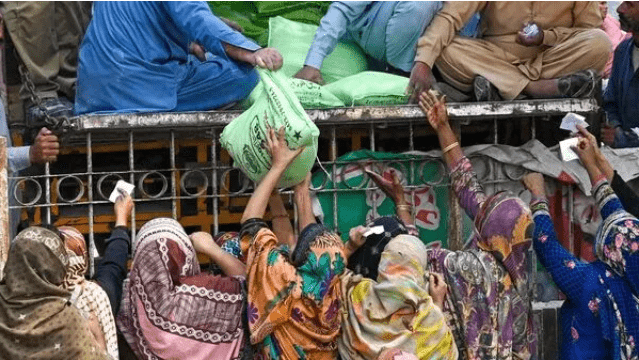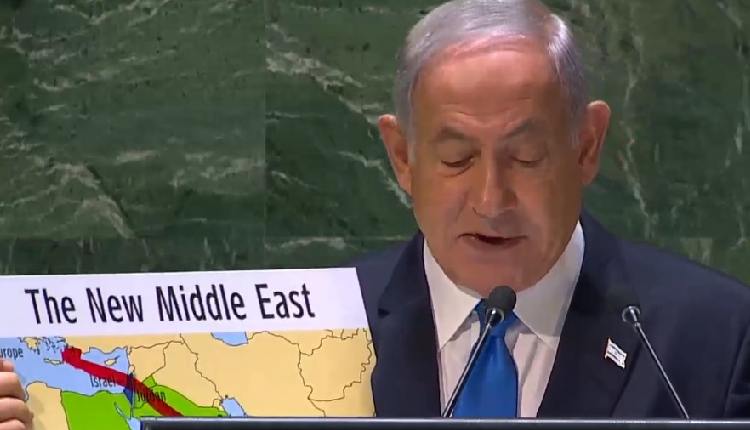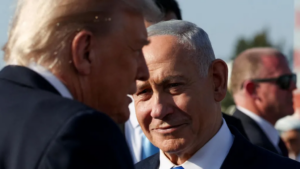
APTI report in The Times of India published on August 24, 2024 stated that Pakistan is in talks with banks in the Middle-East to borrow approximately USD 4 billion to meet its external financial commitments for the current fiscal year. For the current fiscal year, Pakistan has pitched about USD 20 billion in foreign borrowings in the budget, besides another USD 3 billion rollover from UAE that was reported separately in the balance of payments. The IMF indefinitely postponed the approval of a USD 7 billion Extended Fund Facility this week, the report said. Pakistan has now increased efforts to secure loans from foreign commercial banks, although high financing costs and a low credit rating remain two big problems.
Earlier a more comprehensive understanding of the debt crisis in Pakistan was provided in a report titled ‘Pakistan’s Existential Economic Crisis’ published on April 6, 2023 by the US Institute for Peace (USIP) and written by a senior Pakistani journalist Shahbaz Rana. This report stated that as of December 2022, Pakistan’s external debts and liabilities amounted to $126 billion.
The USIP report pointed out that in the new fiscal year debt repayment would amount to $ 25 billion. From April 2023 to June 2026, a period of a little more than three years, the external debt payment was projected at $ 77.5 billion.
At the same time the total exports earnings and remittances during the last three years had amounted to $164 billion while imports of goods had amounted to $ 170 billion.
This USIP report issued a clear warning, “There is a real danger that nuclear armed Pakistan with a population of 230 million people may be unable to meet its external debt obligations which will trigger a sovereign default.”
Nearly 10 months after this report was published, another report by an Islamabad based think-tank Tabadlab in February 2024 described the debt crisis of the country as ‘intense blaze’ (report in the Economic Times on February 19, 2024 titled ‘ Pakistan debt unsustainable, headed for inevitable default’).
An even more recent report by ‘The Bretton Woods Project’ titled ‘Pakistan’s debt crisis fueled by more IMF loans’ questioned whether the lender of last resort was becoming a primary lender in Pakistan. The report stated that the external debt situation in Pakistan was very serious, next only to Sri Lanka, Ghana and Nigeria. This report stated, “If secured, the new loan ( from the IMF) would be the 24th IMF loan for Pakistan with the country already owing the IMF $7 billion, further illustrating the failure of IMF reforms to address Pakistan’s long-term economic issues, while subjecting the country to additional surcharge penalties for over-relying on IMF funding.”
One reason why the debt crisis has kept getting worse is that a big share of the loans taken was not spent in productive ways. To give one example of wasteful or even harmful external loan-based spending, there was a massive, very expensive national drainage project in the early years of this century which was very poorly conceived and implemented, leading to worsening of problems in some places. In this and other cases, large-scale corruption also contributed to failure as well as wastage of funds.
More generally, the luxury consumption of the elite class is often sought to be defended even in very difficult times, and this consumption invariably has a high import content.
A surprising part of the debt crisis of Pakistan is that it has been increasing despite Pakistan having enjoyed very good relations with the richest countries for very considerable periods of time—with countries that are supposed to have the most ability to provide easy funds.
Although Pakistan had military dictatorships that were notorious for trampling democracy and for being extremely corrupt, the USA and its allies generally supported them. General Yahya Khan was supported despite being guilty of even genocidal actions. General Zia’s long reign saw massive funds inflow from the USA and Saudi Arabia, related to Pakistan’s strong role in mobilizing mujahideen resistance to the Russian army and Russia-supported regime in Afghanistan.
When the USA is generous to a country, western allies are also expected to be generous, and the international financial institutions dominated by them are also expected to be generous. So it has been in the context of Pakistan too.
Not just Saudi Arabia, other oil rich middle –east countries too have been on very good terms generally with Pakistan and can be expected to be generous to Pakistan.
China has been extremely friendly towards Pakistan and has been eager to provide funds for many big-budget projects in Pakistan.
Hence we must face the strange fact that despite all the big fund providers having good relations with Pakistan and expected to be generous to Pakistan, Pakistan has been experiencing a very serious and steadily worsening debt crisis.
The big lesson emerging from this is that instead of relying too much on the generosity of rich friends, or even agreeing to play very dangerous games for them—as Pakistan did when it became the regional platform for the USA’s aggression against Russia—it would be much more prudent to just concentrate on managing your economy carefully.
In fact the false over-confidence arising from the exceptionally close relationship of dictatorships with the richest countries led successive regimes to postpone, or altogether avoid, making essential economic reforms, while at the same time taking up dangerous activities, including support of several terror and fanatic groups, which later proved self-destructive for the country.
At the same time as the debt crisis worsened, the country was forced to follow IMF conditions as well as conditions imposed by other lenders which led to austerity and anti-poor measures such as withdrawal of subsidies. This made the life of the bottom half of the population more and more difficult and this in turn led to mass protests by people which had to be suppressed and so the military kept looking for pliant political partners who could do the needful. All this made the emergence and continuation of genuine democracy difficult in Pakistan and so when military dictators were not ruling directly, a partnership of military leadership and civilian, elected political leaders had to created, with the latter apparently running the government but the military exercising remote control (often not so remote).
Looking ahead, as the possibility of debt payment default continues to exist, this may lead to the non-availability of essential imports and all the problems related to this.
However, the solutions cannot be found in the narrow framework of IMF’s or others’ conditions. Pakistan must plan for a wider framework of reforms relating to equality, justice, better economic planning, democracy, moving away from terror-politics and improving relations with neighbors, particularly India. (C-CC)






